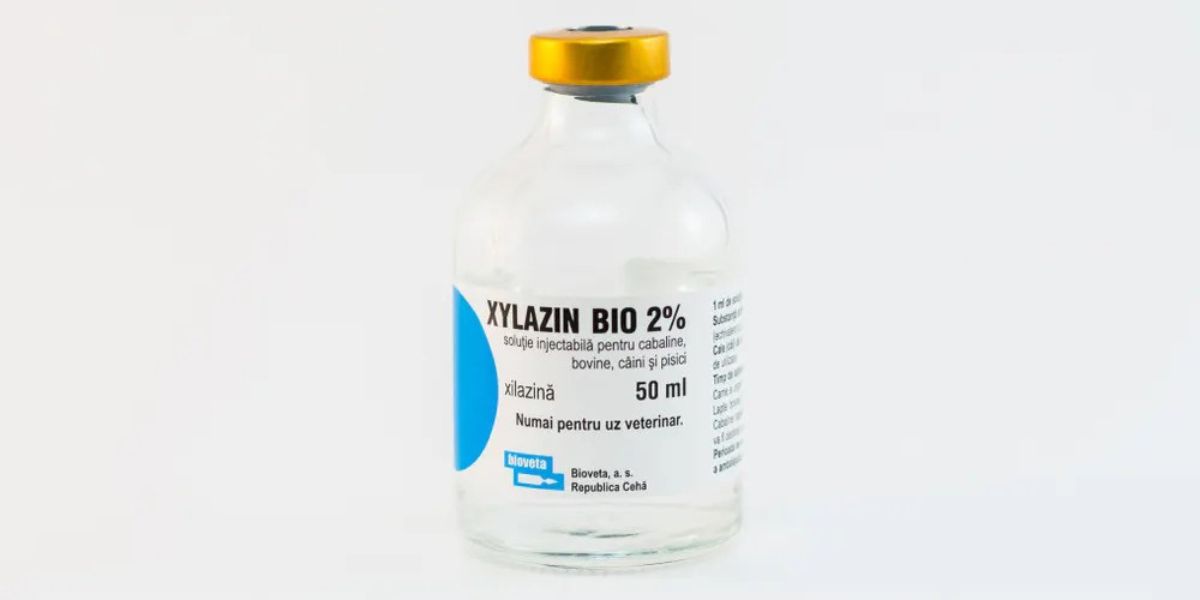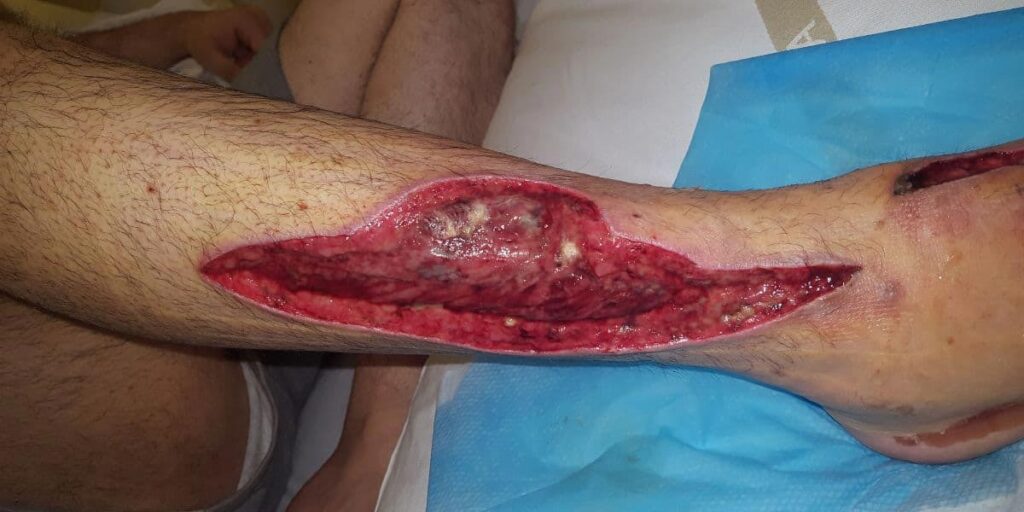What Is the “Zombie Drug”?


The “zombie drug” is a term that has gained significant attention in recent years, particularly in the context of the escalating opioid crisis in the United States. This drug, more formally known as xylazine, is a veterinary tranquilizer that has found its way into the illicit drug market. Often mixed with other potent substances like fentanyl, xylazine has emerged as a severe public health threat because of its dangerous side effects and the difficulty it poses in treatment and overdose prevention.
The rise of xylazine as an additive in street drugs is alarming not only because of its potent sedative effects but also because of its ability to exacerbate the risks associated with opioid use.
In recent years, police and health officials have seen a big rise in drug overdose deaths from xylazine. This shows we need to be more aware and take action. The drug has entered the illegal drug supply, causing a severe public health crisis. Many users do not know the risks of using drugs mixed with this animal tranquilizer.
What Is the Zombie Drug?
The “zombie drug,” or xylazine, is a powerful animal tranquilizer primarily used in veterinary medicine. Initially intended for sedating large animals such as horses, xylazine has unexpectedly entered the human drug supply, particularly as an adulterant in street drugs like heroin and fentanyl.
The nickname zombie drug stems from the drug’s disturbing effects, which include extreme sedation, unconsciousness, and a zombie-like state, making it an emerging threat to public health.
Key characteristics of the zombie drug:
- Originates as a veterinary sedative
- Often mixed with opioids like fentanyl
- Causes extreme sedation and unconsciousness
- Challenging to reverse with standard overdose treatments
- Increasingly prevalent in the United States
Unlike other drugs used in human medicine, xylazine was never intended for human consumption. However, its use has spread, particularly in the United States, where it is increasingly being mixed with opioids. This mixture, commonly referred to as “tranq dope,” is hazardous because it not only enhances the effects of opioids but also complicates overdose treatment, as standard opioid overdose reversal drugs like naloxone are ineffective against xylazine.
Law enforcement agencies and health officials have been alarmed by the rise of xylazine in the illicit drug market. The DEA has reported widespread cases of fentanyl being mixed with xylazine, a trend that has contributed to the rising number of drug overdose deaths across the country. The effects of xylazine on the human body are severe, and its increasing popularity has raised serious concerns about the growing public health implications.

What Is Xylazine Used For?
Xylazine is a non-opioid sedative, pain-killer, and muscle relaxant primarily used in veterinary settings. Its primary use is as an animal tranquilizer, which helps sedate and calm large animals during procedures or in situations requiring immobilization. The drug is a central nervous system depressant, leading to relaxation and pain relief.
Primary veterinary uses of xylazine:
- Sedating large animals like horses and cattle
- Administering pain relief during procedures
- Immobilizing animals for surgeries
- Controlling animal behavior during examinations
In veterinary medicine, xylazine is administered under controlled conditions, typically by trained professionals who closely monitor the animal’s response. The drug’s effects on animals include slowed heart rate, decreased blood pressure, and significant muscle relaxation, all carefully managed by veterinarians.
Despite its legitimate use in veterinary medicine, xylazine has found its way into the illicit drug market, where it is not regulated and is often used without any medical supervision. The reasons for its use in illegal drugs are primarily tied to its sedative properties, which can enhance the effects of opioids like fentanyl. However, this also makes the drug particularly dangerous when consumed by humans, as it can cause severe respiratory depression, unconsciousness, and, in extreme cases, death.
Effects of Xylazine
The effects of xylazine on humans are intense and harmful, particularly because the drug was never intended for human use. When consumed, xylazine induces a range of effects that can be both physically and mentally debilitating.
The immediate effects of xylazine include:
- Deep sedation resembling unconsciousness
- Decreased heart rate and blood pressure
- Muscle relaxation
- Significant drowsiness
- Respiratory depression
- Confusion
- Memory loss
One of the most alarming effects of xylazine is its impact on the cardiovascular system. The drug can cause a marked decrease in heart rate and blood pressure, which, in combination with its sedative effects, can lead to life-threatening conditions such as respiratory depression and cardiac arrest. These effects are particularly dangerous when xylazine is combined with other depressants like opioids, as it significantly increases the risk of overdose and death.
Xylazine also has severe effects on the skin. Prolonged use of the drug can lead to skin ulcers and wounds, particularly at injection sites. These wounds often slowly heal and can become severely infected, leading to further health complications. This has led to the drug being colloquially referred to as the zombie drug because of the appearance of these open sores, which resemble those found in depictions of zombies in popular culture.
The mental effects of xylazine are equally concerning. Users often experience confusion, memory loss, and hallucinations, which can persist even after the drug has been metabolized. These cognitive side effects, combined with the drug’s physical impact, make xylazine a dangerous substance when used illegally.
Long-Term Health Effects of Xylazine
The long-term health effects of xylazine are severe and often irreversible, especially for those who use the drug regularly or in combination with other substances. These long-term health conditions can be life-threatening and often require long-term medical management.
The long-term health effects of xylazine use include:
- Chronic low blood pressure and low heart rate
- Increased risk of heart failure
- Cognitive decline and memory loss
- Severe skin ulcers and necrosis
- Dependency and substance use disorders
In addition to cardiovascular issues, xylazine use can cause long-lasting damage to the nervous system. Prolonged exposure to the drug can result in neurological impairments such as cognitive decline, memory loss, and difficulty concentrating. These neurological effects can significantly impair a person’s quality of life, making it difficult to perform daily tasks or maintain employment.
Another significant long-term effect of xylazine use is the damage it causes to the skin and soft tissues. The skin ulcers and wounds associated with xylazine use can become chronic, leading to severe infections, abscesses, and even necrosis (the death of body tissue). These wounds often require intensive medical treatment, including surgery, to manage and can leave permanent scars.
Additionally, the combination of xylazine with other drugs, particularly opioids like fentanyl, increases the risk of developing a substance use disorder. This combination can lead to a cycle of addiction that is difficult to break, as the physical dependence on both substances exacerbates withdrawal symptoms and increases the likelihood of relapse.
The long-term health effects of xylazine underscore the need for comprehensive addiction treatment and public health interventions to address the growing use of this dangerous drug. Without proper treatment, people who use xylazine face a high risk of severe health complications, including death.

Copyright: Morphx1982
Credit: Morphx1982
CC BY SA 4.0
Evidence-Based Addiction Treatment at White Oak Recovery Center
If you or a loved one is struggling with addiction, White Oak Recovery Center (WORC) can be the help and support needed to achieve lasting sobriety and meaningful recovery.
At WORC, we understand the devastating impact that substances like xylazine can have on people and their families. Our evidence-based inpatient addiction treatment center is designed to address the complex needs of those struggling with substance use and co-occurring mental health disorders.
WORC provides a comprehensive approach to addiction treatment, combining compassion, care, and support in an empowering environment to help you heal the underlying causes of your addiction.
Our treatment programs are tailored to meet the unique needs of each person, ensuring that they receive the care and support necessary to overcome addiction and rebuild their lives with custom-tailored treatment plans.
WORC provides many intensive treatments and therapies, including medical detox, individual and group therapy, medication-assisted treatment, dual diagnosis, and aftercare planning, to ensure that our residents have the tools and strategies they need to maintain their recovery.
At White Oak Recovery Center, we believe that recovery is possible for everyone, no matter how severe their addiction. Reach out today to reclaim your life and begin your path to recovery.

Am I covered for addiction treatment?
Your insurance may cover treatment. Call now for an entirely free and confidential assessment. Recovery starts with a phone call.

- Debnath, Rabin, and Chawla, Pooja A., “Xylazine Addiction Turning Humans to Zombies: Fact or Myth?” Department of Pharmaceutical Chemistry, ISF College of Pharmacy, Oct. 2023.
- “DEA Reports Widespread Threat of Fentanyl Mixed with Xylazine.” United States Drug Enforcement Administration, Nov. 2022.
- “Xylazine.” National Institute on Drug Abuse, Jun. 2024.
- “Xylazine: What Clinicians Need to Know.” New York State Department of Health, Mar. 2023.
- Bowles, Jeanette M., et al., “Media Framing Xylazine as a ‘Zombie Drug’ is Amplifying Stigma onto People Who Use Drugs.” Int J Drug Policy., Mar. 2024.
Medical Disclaimer:







